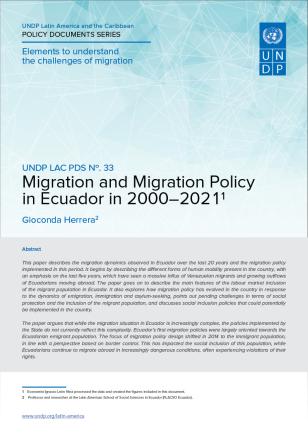Migration and Migration Policy in Ecuador in 2000–20211
Migration and Migration Policy in Ecuador in 2000–20211
October 18, 2022
This paper describes the migration dynamics observed in Ecuador over the last 20 years and the migration policy implemented in this period. It begins by describing the different forms of human mobility present in the country, with an emphasis on the last five years, which have seen a massive influx of Venezuelan migrants and growing outflows of Ecuadorians moving abroad.
The paper goes on to describe the main features of the labour market inclusion of the migrant population in Ecuador. It also explores how migration policy has evolved in the country in response to the dynamics of emigration, immigration and asylum-seeking, points out pending challenges in terms of social protection and the inclusion of the migrant population, and discusses social inclusion policies that could potentially be implemented in the country.
The paper argues that while the migration situation in Ecuador is increasingly complex, the policies implemented by the State do not currently reflect this complexity. Ecuador’s first migration policies were largely oriented towards the Ecuadorian emigrant population. The focus of migration policy design shifted in 2014 to the immigrant population, in line with a perspective based on border control. This has impacted the social inclusion of this population, while Ecuadorians continue to migrate abroad in increasingly dangerous conditions, often experiencing violations of their rights.


 Locations
Locations





